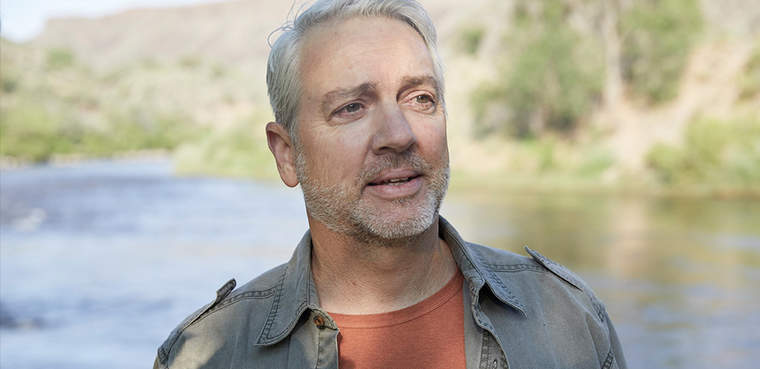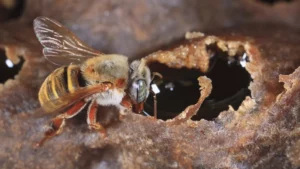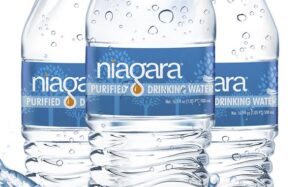Jon Radtke manages Coca-Cola’s water stewardship program, which assesses and mitigates water risks facing Coca-Cola operations with an emphasis on creating business value. His primary areas of focus include water conservation in manufacturing, source water protection, community water partnerships, sustainable agriculture initiatives and marine litter strategies.
Coca-Cola had the goal of returning to nature and communities by 2020 an amount of water equivalent to the water used in its beverages and their production. Radtke’s leadership helped Coca-Cola reach this goal five years early. Coca-Cola continues to meet its water neutrality goal each year by investing in watershed restoration projects across the globe.
John Sabo: Corporate water stewardship started as reputational risk management, but it’s made great strides toward actual impact on water supplies and abundance. What are the obstacles left to completing that trajectory over to pure impact?
Jon Radtke: From a corporate perspective, reputation is still a risk to be managed. Perception can be reality when it comes to public opinion’s impact on our bottom line. But we also need to look at those material risks and opportunities that can help have a positive impact on watersheds and water supplies. I agree that’s where corporate water stewardship is headed and where we need to go.
One of the obstacles we had to overcome when we first started our water stewardship work at Coca-Cola was: What can we do as a company on our own, with a limited budget? What I’ve learned is that we need to focus on collaboration — across sectors or even within our industry on a pre-competitive basis. Water is the ultimate shared resource. Collaboration scales up impact.

Another obstacle was the question: What’s the ROI? Because you don’t necessarily always get a monetary return. You have to think in terms of business continuity and risk reduction; you have to think longer-term. And you also have to be willing to invest dollars, not just in-kind or volunteer activities. What’s really needed are dollars to get the right people doing the right things to make a difference. I see more companies realizing that they can’t make a difference just by their own investments.
Sabo: We usually measure watershed impact in gallons. Is that really the best measure of impact? If not, what would be better?
Radtke: Gallons are important. But we also need to look at water quality, resiliency, biodiversity, habitat improvement, carbon sequestration, even recreation benefits. We’re just now really trying to reach out and capture some of this, because we know it’s important and helps to tell the overall story. But it’s hard to establish good metrics. Measuring gallons is a lot easier.
One thing we’ve been looking into is the value of environmental services and taking a natural capital approach. The leadership in most companies speak this language and the concept is starting to get traction. But from what I can tell, nobody has really figured out the best way to calculate natural capital and value it. Everybody has a different model or tool, and we need to reach agreement on what the standards are. We’re at the early stages, but eventually we’ll get there.
Sabo: What’s the role of the private sector in pushing us towards blended systems of green and grey infrastructure? And where are the greatest opportunities for that right now?
Radtke: The way I see it: we’re part of the community. Most of our plants purchase water from the local municipality or water utility, and we’re typically one of their larger customers. Not only that, our company is an economic driver for the community. So we have some influence, and we need to leverage that influence to advocate for these municipalities and utilities to invest in green infrastructure. Another thing we do is invest in pilot projects to demonstrate that green infrastructure works.
What I’ve learned is that we need to focus on collaboration — across sectors or even within our industry on a pre-competitive basis. Water is the ultimate shared resource.
When I think of opportunities for green and gray infrastructure to work together, a few key sectors and regions come to mind. Urban stormwater is one. There’s also a lot of opportunity in the agriculture sector to reduce the amount of runoff into the fields. We do a lot of work in restoring headwaters of watersheds — especially in arid regions like the Southwest and California — where we restore the natural hydrology of these systems to create water storage and provide an alternative to building more reservoirs.
When we reframe global water as a series of opportunities to generate abundance rather than a series of challenges to alleviating scarcity, how does that change the game for corporations and the role they play?
Radtke: Reframing global water as an “opportunity to generate abundance” allows corporations to be proactive instead of just reacting to negativity or attacks. That attitude means companies don’t have to be so defensive. It allows them to step outside their comfort zones and start collaborating with non-traditional partners — whether it’s NGOs or environmental groups — to start solving some of these big issues. Instead of looking at the NGO or environmental community as adversaries, you see them as partners. If you can start creating positive stories, you’re more committed and more passionate. It’s an important way to frame this discussion.
This article first appeared on Medium.















